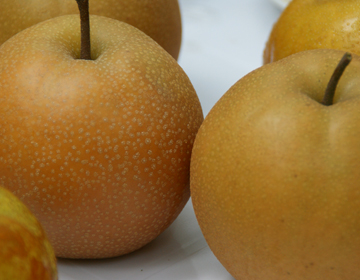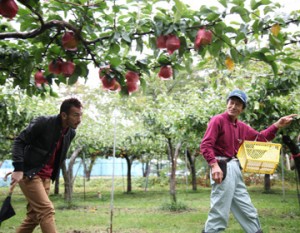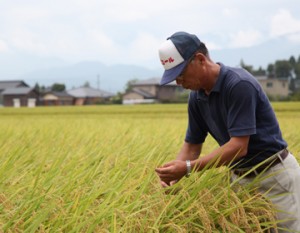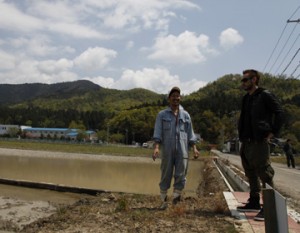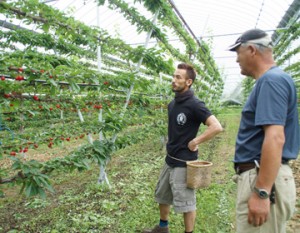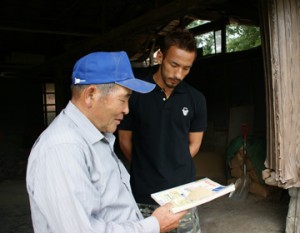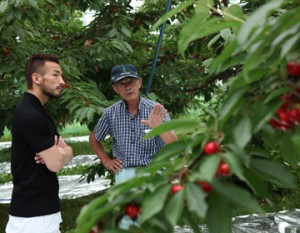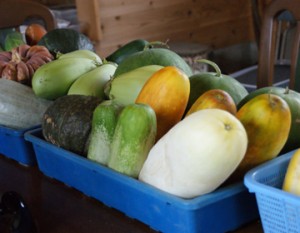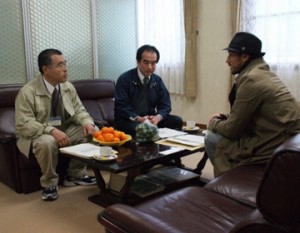Winning 2 Minister of Agriculture, Forestry and Fisheries Awards
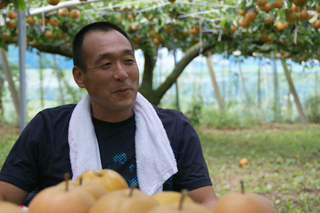
When Nakata asked, ”Was your family originally pear farmers?”
Takashi Akiyama responded ”Actually, no.”
As a pear farmer, Akiyama is the only two time winner of the Minister of Agriculture, Forestry and Fisheries Award at ”Chiba’s Best Tasting Pear Contest.”
So naturally, we thought he was born and raised on a pear farm, but actually, he was born in Fukushima, and was set on becoming a professional baseball player until he was 18.
”I was dreaming of becoming a professional baseball player, but I had to give up. Afterwards, I got a job in Tokyo but lived in the area, so after I got married, I started to seriously study about pear cultivation.”
While listening to Akiyama’s story, we walk through an area where the branches of the pear trees have been spread out like a low hanging ceiling.
It looks a bit like an abstract space and is beautiful to look at, but the low height makes it difficult to walk.
”Why are the branches so low?”
”If it’s too high, it’s difficult to prune. At first, we set up the shelves at about 180 cm. Similar to grape shelves. When the fruits grow, they weigh it down to about 1 meter 70 centimeters. Pear fruits are actually quite heavy.”
New varieties competing for taste and popularity
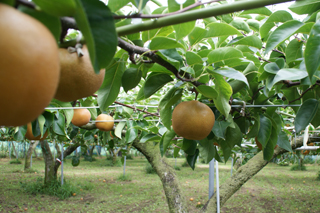
This area has been producing Twentieth Century pears since the Meiji era.
Akiyama also planted only Twentieth Century pears in the beginning. After 3 years, he heard that ”Hosui is good”, so he grafted Hosui to the Twentieth Century trees, and it’s been 35 years since.
He also grows Kosui and Shinko pears.
According to Akiyama, in the world of pears, many varieties are introduced and then disappear.
”Many varieties are created, but none of them can compete with Hosui or Kosui.”
The new varieties that Akiyama has high expectations for are ”Shurei” and ”Akizuki”.
”Shurei” is an especially sweet variety among the Aonashi strain, and is so popular that it sells out quickly. Nakata, who is a pear lover, also praised it highly saying ”Oh, this is good!!”.
The taste is a little different from normal pear. ”It tastes like sweet persimmon rather than a pear.”
We could not try ”Akizuki” since it was too early in the season, but they are the best quality variety mixing Japan’s Three Great Pears – ”Kosui”, ”Hosui” and ”Shinko”. The characteristic of the fruit is that it is soft, sweet and juicy without much acidic taste.
The taste of healthy Hosui
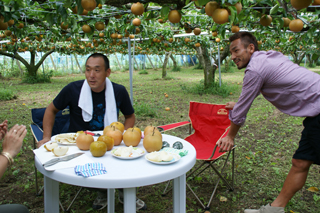
”What is important for pears to become delicious?” asked Nakata. Akiyama responded
”Make good quality soil using organic fertilizer, and grow healthy trees.”
”The taste must be evaluated by the customers. So I ask my regular customers to share their honest impressions.”
When we visited, Kosui season was ending, and Hosui was soon going to be harvested.
Akiyama asked Nakata with an expression of both pride and concern, ”How is our Hosui?”
”It is good. But still a little hard. If I wait a little, it might become softer and more delicious. I predict that after a little while, the acidity and sweetness will balance each other out, and that would make it taste very good.”
It was a little too early, but during the peak season, it will probably be a delicious pear for sure.



